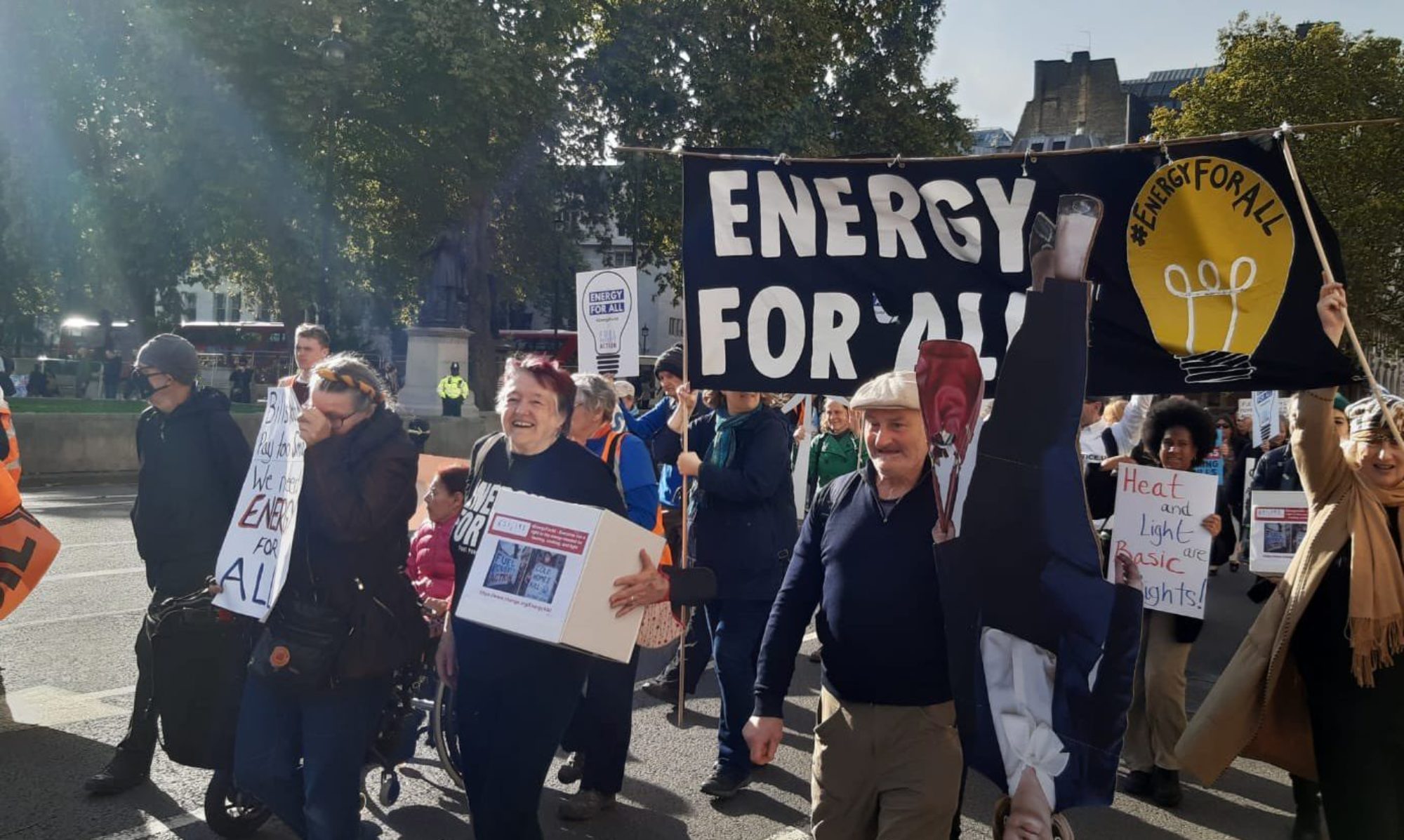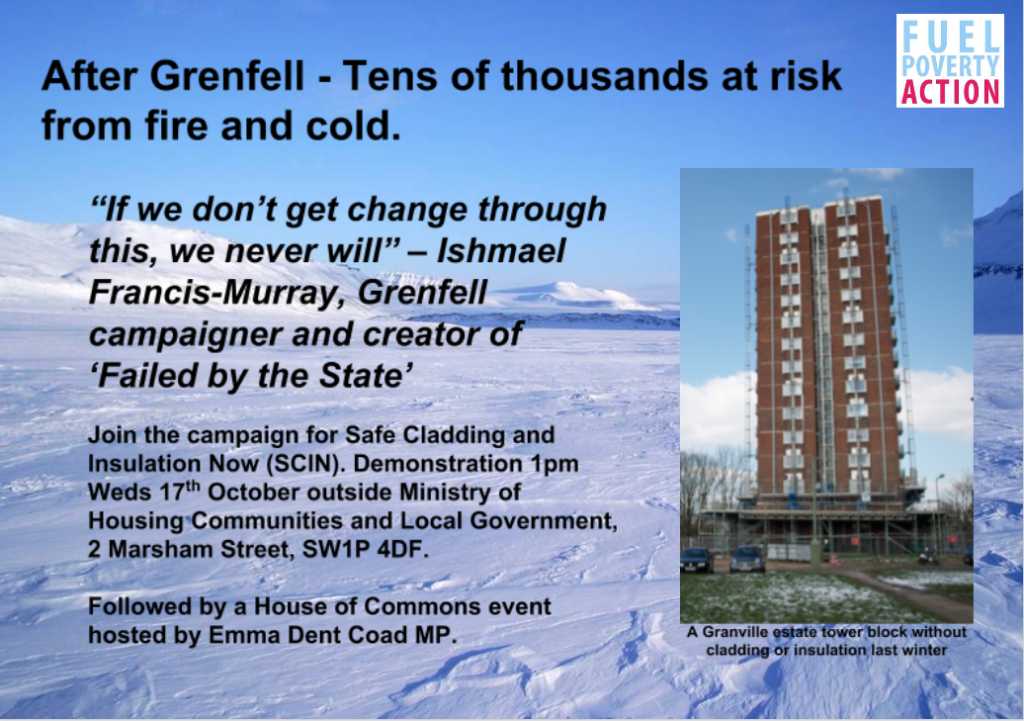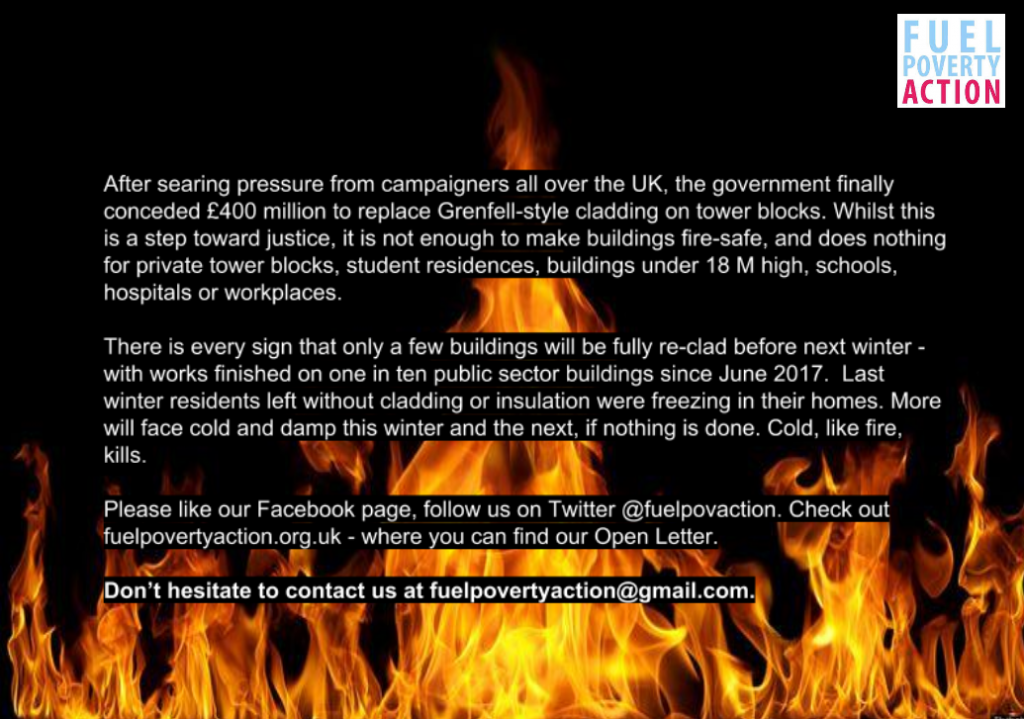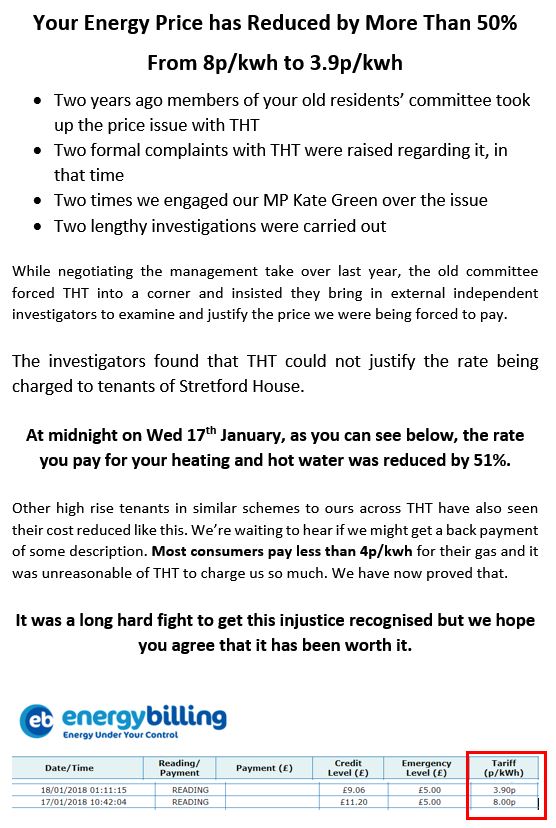Examination of the London Plan 29 March 2019-
“Sustainable infrastructure” — housing and heating.
District Heating (DH) is like central heating for a whole building, housing estate, or area: heat is produced at a central point and distributed, in the form of hot water, via pipes. It is being heavily promoted, subsidised and incentivised by the UK central government and by the Mayor of London, on the grounds that it will help to reduce carbon emissions due to heating — which represent nearly 1/5 of carbon emissions in total. But will this be at the cost of the people who use it? And will it actually work? Will the promise of lower emissions result in real carbon savings, or will the changes brought in in the name of the climate just profit unaccountable developers and energy corporations? How can we make “green” come true?
The London Plan
The new London Plan now being finalised by the Mayor will lay down plans and policies for London for the next 20 – 25 yrs. It is in the final stages of a process of consultation which has been remarkably democratic, within the restrictions sent by central government policies and funding constraints. A draft was made available and submissions accepted from a very wide range of organisations and individuals, all were made publicly available, the draft was revised and published again, and is finally being subjected to detailed “Examination in Public” — EiP — at City Hall.
Fuel Poverty Action were glad to be invited to take part in the session on Sustainable Infrastructure, on 29 March 2019. The discussion took for granted the seriousness of the climate crisis and a determination to decarbonise. Its particular focus was on heating — one of the hardest areas to make green — and within that, the focus was largely on the Mayor’s favoured option: District Heating.
The EiP assembled formidable expertise, hearing from representatives of the DH industry, architecture, planning, and energy consultancies. Yet there had clearly been no process for engaging grassroots participants, and no expectation that DH users’ experience would be relevant to policy decisions, at the EiP stage, or earlier.
A failure to protect London residents or the environment
Perhaps it is not surprising then, that the proposed measures in relation to DH had two crucial failures:
- a) they fail to protect residents on DH estates, locked into decades-long contracts with a monopoly heat supplier, and
- b) they fail to guarantee carbon savings and in fact leave the door open to technology with relatively high emissions both of carbon and of nitrous oxide (NOx), threatening London’s already dire air quality.
There does not have to be a conflict between decarbonising infrastructure and making it more affordable and reliable for users. In fact FPA is founded on the premise that policies that create such a contradiction between sustainability and social justice are deadly to our chances of achieving not only a just transition but any transition at all, as people refuse to accept unjust solutions.
After focusing first on greenhouse gas emissions targets, the “carbon offset” scheme for developments, and embodied carbon, much of the morning at the EiP focused on two paragraphs in the London Plan where Mayor lays out how he intends to prioritise DH.
Planning in problems
FPA is in no way opposed to DH on principle. We have, in fact, supported residents fighting hard to maintain an existing council DH system (sadly, they lost, and had individual gas boilers imposed). We work with residents living with horrendously unreliable DH systems, constant outages, cold hot water, overheating, sky high prices and demands for major capital costs from leaseholders, but we do not believe these problems are intrinsic to DH, which often works very well in other parts of the world, and sometimes in the UK (eg in Aberdeen).
The problems arise from bad planning leading to inappropriate choices of where to use DH, and how it should be fuelled and designed; lack of regulation, monitoring and enforcement of standards; lack of training and skills for the workforce that must design, install and maintain the heat networks; lack of any clear line of accountability through the multiple layers of contractors involved in construction; and a system of procurement and finance for heat networks that seems designed to encourage the highest possible costs and the lowest standards.
On 29 March we were dealing with one aspect of this quagmire: planning. Many very cogent and important contributions which can be heard here. However, no transcript is available, and we are able here only to offer the points we made ourselves, and the responses to them.
In the light of how DH often works out in practice, we asked: should it be presumed that for the next two decades it will necessarily be the best solution to the heating dilemma? And what should be done to ensure that where it is installed, it does what it says on the tin?
In the draft Plan, a “Heat Networks Priority Area” covers most of London, and “Major development proposals within Heat Network Priority Areas should have a communal low-temperature heating system.” This does not mean that DH will ultimately be chosen – it is rarely developers’ first choice. But the GLA’s clear preference is powerful, and in any case all such new developments must be DH ready.
What are the alternatives?
The draft Plan lays down a list of factors which must be considered in deciding what form of heating to install in a development. In response to consultation, an addition was made to the list: “11A) opportunities to maximise renewable electricity generation and incorporate demand-side response measures.” But the rest of the list concerns specific questions related to District Heating with no detailed consideration of other options. There is no indication of whether “maximising electricity generation” might mean community owned and run renewable energy, solar panels on individual homes, or commercial power plants. Heat pumps, absent from this list, are barely mentioned in the draft Plan, along with solar thermal, solar PV, wind and hydro power.
Crucially, in a chapter on energy and heat, there is nothing on energy efficiency, despite the fact that very well insulated homes can make any form of heating unnecessary except on a few days each year. Unlike DH, energy efficiency measures are repeatedly presented as being contingent on central government funding. And there are no specifics, no indication of the need to avoid insulation being left out of new builds by self-certifying construction contractors, or retrofitted in old buildings so badly that they’re damp and less healthy than before. Nothing on the risks of toxic and flammable materials, that have both been so tragically highlighted by Grenfell.
The cost to residents
In the hearing, we focused most on the fact that the Plan writes in no protection at all for DH users – no protection from networks that prove unreliable, or that do not in practice yield the carbon benefits in the name of which they are prioritised, due to oversizing, poor design or maintenance, or promised “green” components that never materialise.
District Heating is delivered by “Heat Networks”, and in the Plan most of London falls in “Heat Network Priority Areas. Outside these areas, development proposals must “avoid high energy bills for occupants”, but inside these areas there is no equivalent requirement. We pointed out that the Competition and Markets Authority has recently found that the protection of future consumers is inadequate in London, with little transparency or genuine customer engagement and that as a result they may end up paying a high price for new green infrastructure which does not benefit them personally (or, we would add, benefits them no more than any other person living on the planet). FPA pointed out that this is just what happened in Lambeth’s Myatts Field North where a DH system was effectively imposed by the then Greater London Council, and that there is nothing in the draft London Plan to prevent that happening again. It is also just the kind of unjust and high-handed decision that the Yellow Vests in France have been protesting. We pointed out that the CMA made clear that more protection should be built in at the planning stage and that it was shocking, after Grenfell and the Hackitt review, to find no recognition of any need for consultation with residents.
Combined Heat and Power
Worryingly, FPA also said the draft Plan is ambiguous on the continued use of Combined Heat and Power — the system where combustion is used to create both heat and electricity. With its dual purpose, and the income created by sale of electric power, gas CHP has obvious advantages. The draft Plan implies that it is generally ruled out because of NOx emissions. In addition, as electricity decarbonises, burning gas appears less and less like a low carbon alternative. There are alternative renewable or waste heat energy sources for DH, eg secondary sources like the underground, industry or the Thames, augmented by heat pumps, but a really satisfactory replacement for gas CHP has not yet been found. The draft Plan, accordingly, includes a get-out clause, saying gas CHP could still be used, although “only where there is a case for CHP to enable the delivery of an area-wide heat network”.
In response to FPA’s question on this, the chair probed and determined that CHP had been moved down the hierarchy of preferences, since the last London Plan, but had not been ruled out. Dismayed, FPA said the vague language about “making a case”, with no criteria stated, gave the industry carte blanche to continue with a polluting technology. The Mayor’s team responded that the rules on NOx emissions for CHP plants were very stringent,. The worry remains that without fixed guidelines, the new London Plan could end up perpetuating fossil fuel technology. There is not even a requirement that systems should be readily convertable to renewable energy sources, eg with suitably sized pipes and radiators.
Meanwhile, two representatives of firms dealing in energy from waste, pressed this as an alternative source of CHP. Labour AM Leonie Cooper replied that a decision had already been taken that producing both heat and power from waste has not proved to be efficient, and that there were other ways of dealing with waste – particularly by reducing it. Leonie Cooper had also led round tables, and had heard first hand the reality of life for residents living with problematic DH networks. She said the “comments made by FPA and alluded to by others” were “extremely important”, and that many heat networks were in bad repair, and it would be a “travesty” to install more that would turn out to be problematic.
Accountability to residents
The other critical issue dealt with was relief for residents locked into existing DH systems that are not working well. When we pressed on this — and gave examples from residents’ campaigns in Southwark, Hillingdon, and Tower Hamlets — the Mayor’s office acknowledged that it was important to look at these schemes and see what support can be offered. Major improvements can be retrofitted that can halve the costs of heating and massively improve reliability. FPA’s view is that this should be done everywhere where there is a major problem — which, from all the surveys done, appears to be a minority of networks — and that heat providers should be subject to licensing, to ensure that existing schemes are rescued before new ones are built.
In repeated submissions to the GLA on energy and housing issues, and to BEIS and the CMA (all available here), FPA have laid out residents’ experience and made proposals for how District Heating could be made accountable to them. This is not a side issue — in the present global emergency ways must be found to cut carbon emissions that lead to real, enforceable results — and that also serve, engage, and benefit people who are struggling to keep warm.
Ruth London 30 April 2019















 .
.  .
. 


